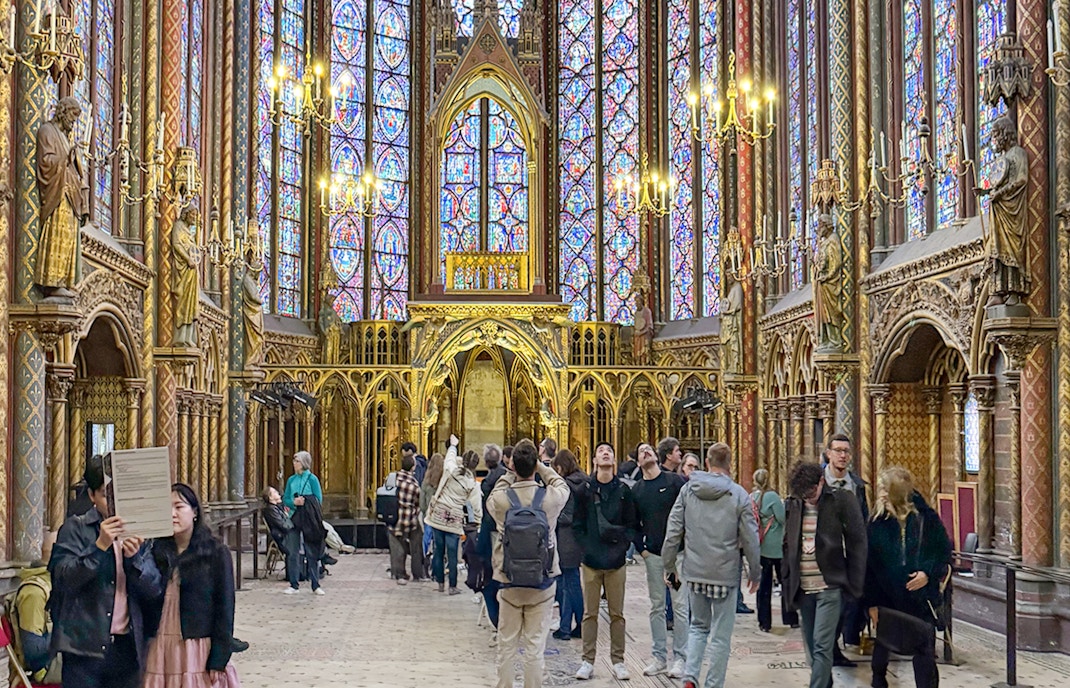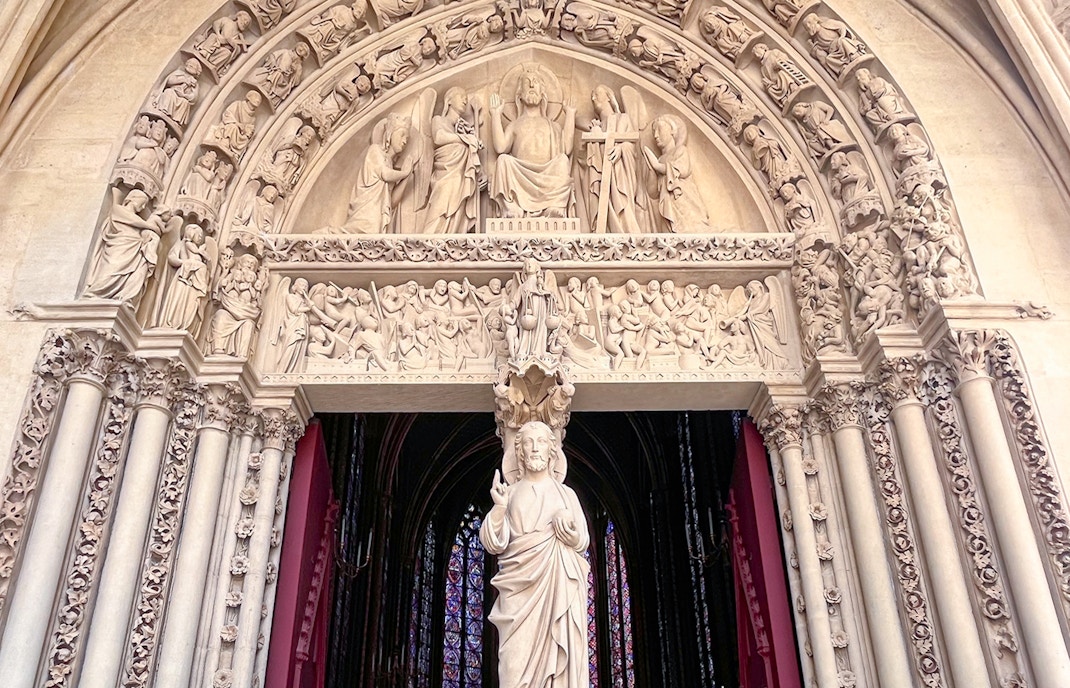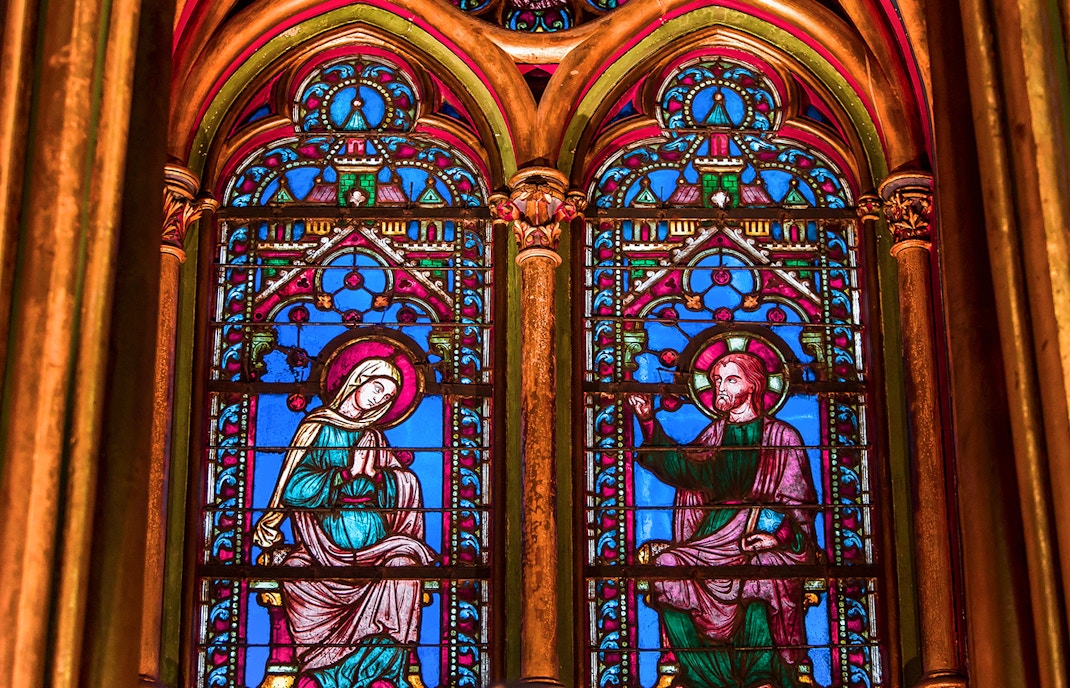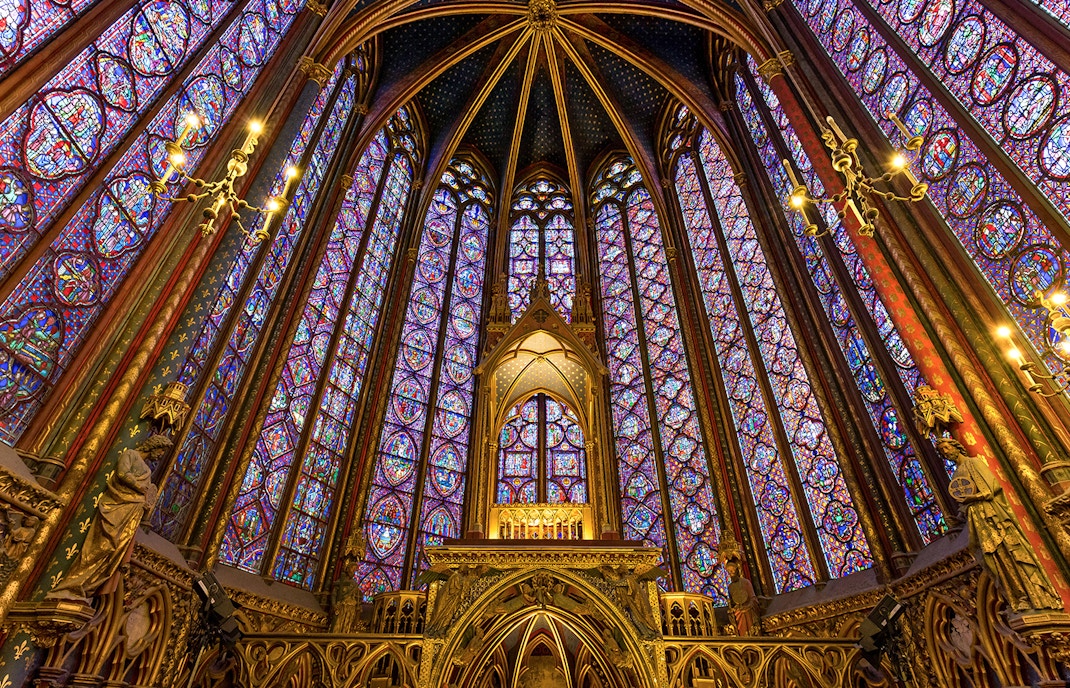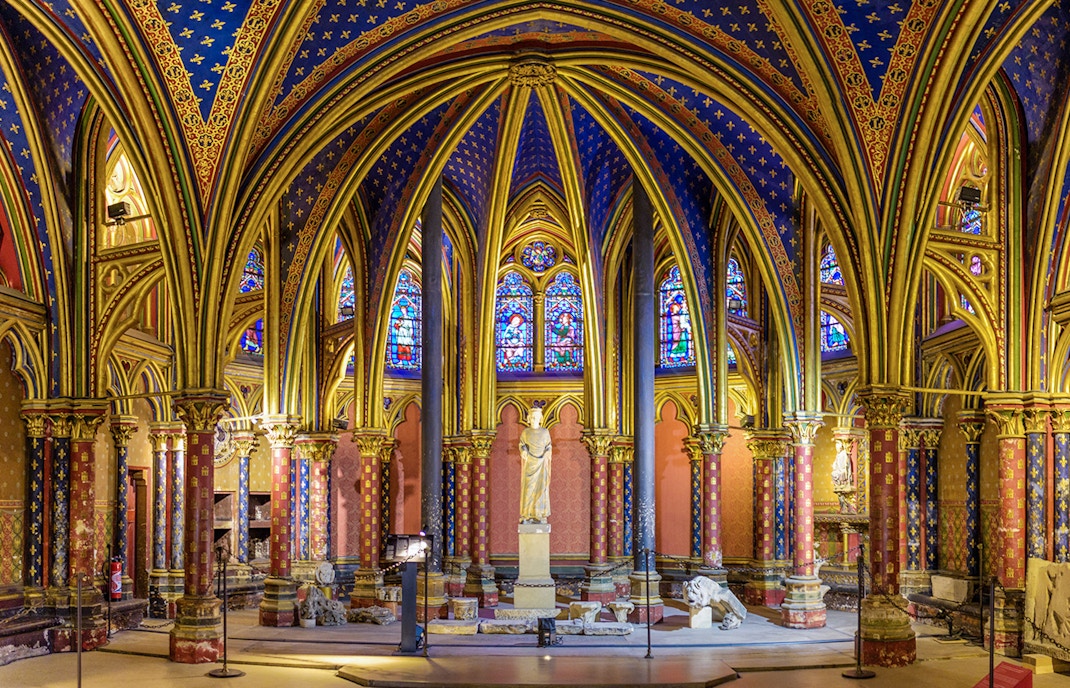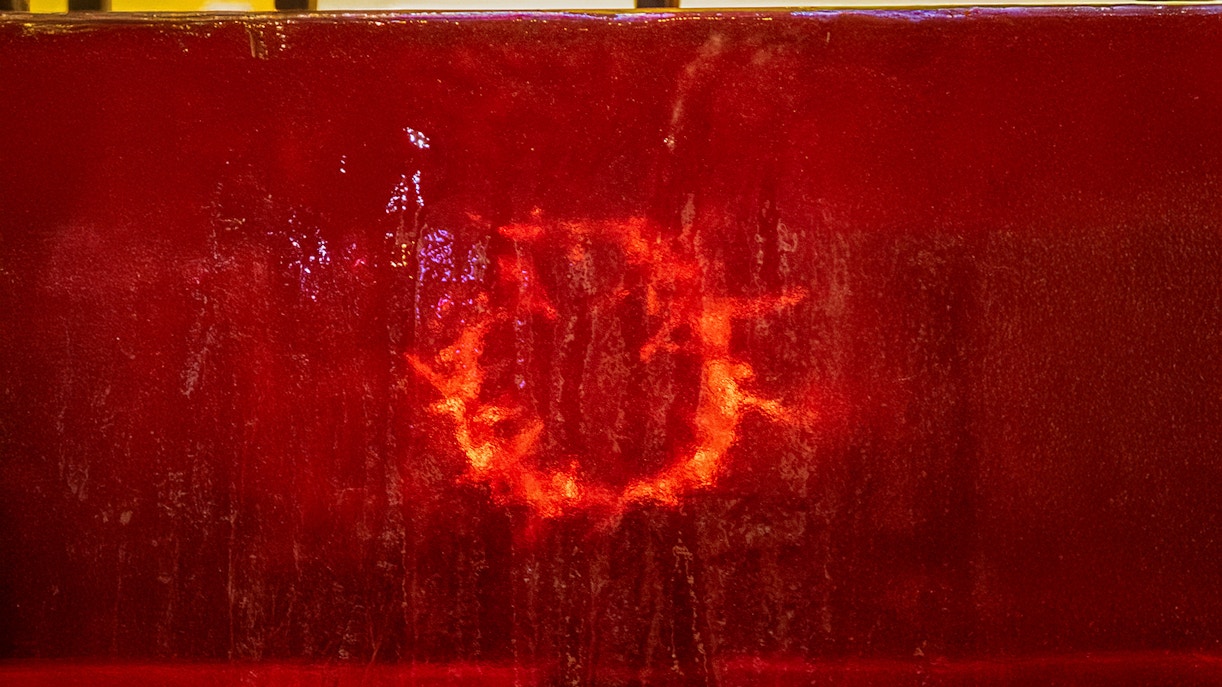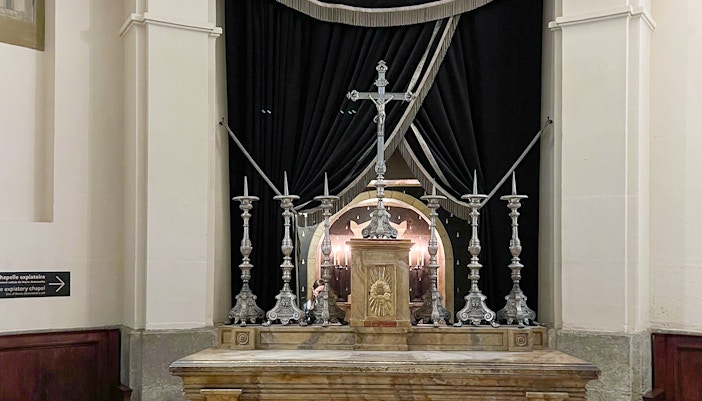13th century
Sainte-Chapelle was commissioned by King Louis IX (later canonized as Saint Louis) in 1241, a deeply religious monarch whose devotion to Christianity was integral to his reign. The primary purpose of the chapel was to house the Crown of Thorns, fragments of the True Cross, and other sacred relics associated with the Passion of Christ.
The chapel’s construction began in 1241 and was completed in just seven years, a remarkably short period for such an elaborate Gothic structure. Its design was entrusted to the architect Pierre de Montreuil and followed the Rayonnant Gothic style, which focused on creating height, light, and openness in architecture.

